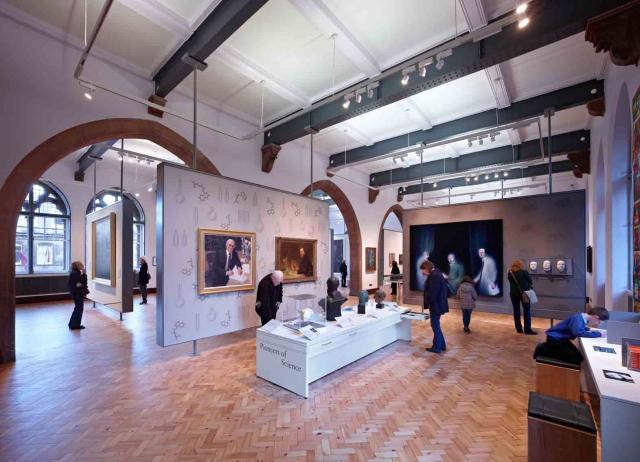

Scottish National Portrait Gallery, Edinburgh, Scotland
Panelock has been working closely with exhibition designers Studioarc during the recent major refurbishment of the Scottish National Portrait Gallery’s exhibition spaces. Panelock’s Gallery Display System 200 was taken as the initial blueprint due to its proven flexibility, durability and ability to be easily assembled and dismantled. After in depth discussions, thought, and much experimentation and adaptation of the System, during which many full size prototypes were produced in Panelock's factory, Studioarc’s perception of the display screens within the finished galleries was finally achieved. The specially adapted, slimline, Gallery Display System 200 units appear to be suspended in mid air, maintaining spacious well lit vistas throughout the length and breadth of the galleries, whilst allowing the wealth of Scotland's national portraits to be displayed to their best advantage and allowing visitors to experience the galleries as architect Sir Robert Rowland Anderson had originally envisaged.
The intention was to restore the building to its original appearance and function. Panelock designers liaised with architects and exhibition designers for over 3 years to perfect a display formula and design that would maintain the new airy appearance of the galleries and not mask the architectural details of the building. The magnificent red sandstone neo-gothic building, home to Scotland’s national collection of portraits and also the National Photography Collection, is a distinctive landmark on Edinburgh’s Queen Street and was the world’s first purpose-built national portrait gallery. Internally the galleries are no less impressive, especially now they have been opened up to reveal the previously hidden Victorian architectural detailing. The renovation has increased the display space substantially by opening up previously inaccessible parts of the building and the collections are now able to be shown in new and unexpected ways and within the context of time and place. False walls and lowered ceilings have been removed and windows opened up and the great coved ceilings on the upper floors on the western side of the Gallery have been restored to their former glory. In addition to the 17 well lit new galleries, new facilities such as education areas, a café and a new photographic gallery have been added, all within the footprint of the original building.
Images courtesy of The Edinburgh Reporter : www.theedinburghreporter.co.uk
